Less Than Expected, More Than Enough

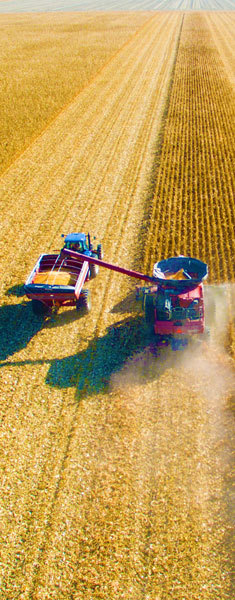
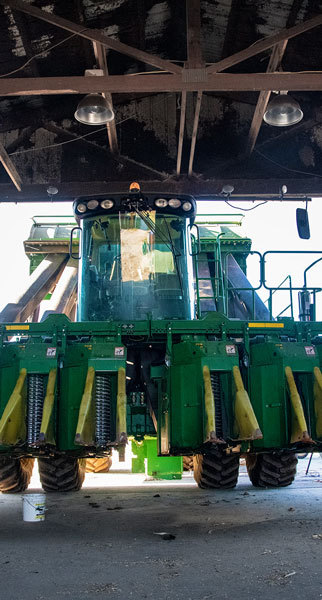
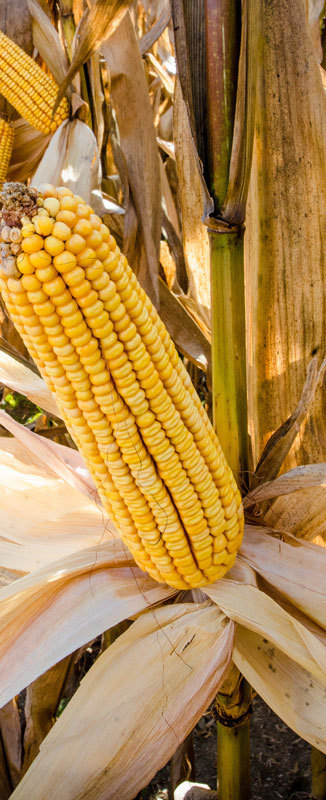
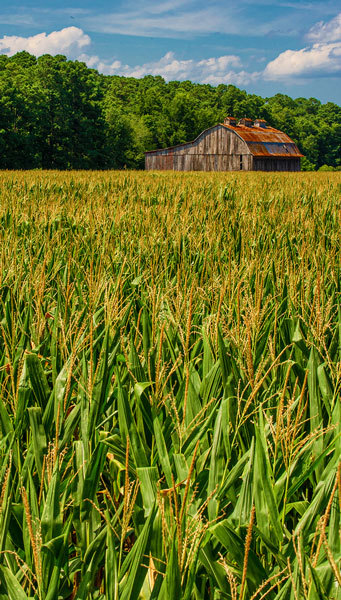




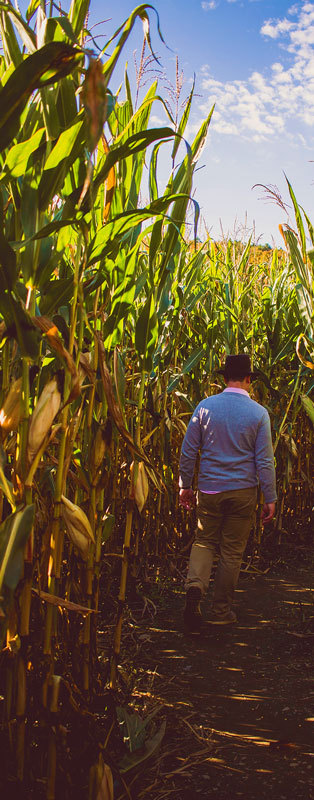
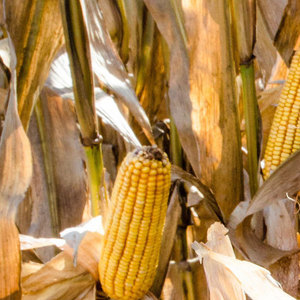
August 24, 2020
BY Luke Geiver
Note: This article was published in the September issue of Ethanol Producer Magazine prior to the August 10 storm that brought severe winds and hail to Iowa, damaging an as much as 10 million acres of crops. Despite the storm in Iowa, analysts say a near-record harvest could be in store.
This season’s corn crop has had its ups and downs. Early planting intentions by U.S. growers created the possibility for more than 97 million acres of corn to be planted in the 2020-’21 season. As of late summer, the United States Department of Agriculture and others in the corn forecasting sector predicted planted acreage would come in at roughly 92 million acres, with 84 million of those acres harvestable.
In March, the economic impact of COVID-19—which spurred reduced driving, food processing shutdowns and global grain demand uncertainty—was already clear to economists Scott Irwin and Todd Hubbs from the University of Illinois’ Department of Agriculture and Consumer Economics. A review of corn data by Irwin and Hubbs in late June helped them explain to regional and national parties connected to the agriculture sector where the current crop was headed, despite early projections. Although weather and planting conditions played an important role in this spring’s planting numbers, Irwin says COVID-19 provided an important basis for the actions growers ultimately took.
Less-than-ideal economics—a direct result of COVID-19—played a large part in the reduction of the total corn crop by 5 million acres. Along with the economic factors of the pandemic, Hubbs says many farmers made the choice to pursue preventative planting instead of forcing a corn crop. “Incentives and experience pushed farmers toward prevent-plant,” Hubbs says. After 2019, many farmers in the Corn Belt gained experience in how to properly plant, grow and utilize fiscal incentives associated with prevent-plant practices.
Advertisement
Advertisement
Although the 5-million-acre pullback for corn was a surprise when USDA released the data showing planted acres were 92 million and not 97 million, Hubbs says it was probably a good thing. “We didn’t need 97 million acres and thankfully we didn’t get them,” he says. A crop that comes in closer to 92 million acres—or even less—would help to drive up the price of corn in his estimation. As for overall volume, the 2020-’21 season will still yield massive results. At 92 million planted acres, U.S. growers will plant nearly 3 million more acres of corn this year compared to 2019. The number of corn acres harvested is expected to reach 84 million, up nearly 3 million acres from the previous year as well. Also up this year is the total production yield. The USDA believes the average bushels per acreage for the U.S. this year will be 178.5.
Across the major corn growing states, there are major discrepancies in corn acres planted this season, compared to last. South Dakota (+24.1), Indiana (+8), Wisconsin (+5.3), Illinois (+3.8), Minnesota (+3.8) and Iowa (+3.7) all showed increases in the percentage of corn acres planted this year versus last. North Dakota (-31.4), Kansas (-4.7) and Nebraska (-3), conversely, showed drops. Issues related to lingering 2019 harvest issues and untimely precipitation amounts were the main causes for those states showing a drop in corn acres planted compared to the previous year.
In most of the main corn-growing regions, the planting season and mid-summer growing conditions have been a positive. According to USDA, by May 31, producers had 93 percent of the corn crop in. According to Hubbs, that is a major accomplishment for corn planters, considering that by May 15 planting conditions were good before, he says, “everything got really wet.”
Those early planting efforts meant that compared to 2019, 2020 growers were nearly 30 percent above the prior year’s planting rate, and roughly 4 percent higher than then the five-year average. By June 28, despite a warmer than average month for most of the Corn Belt, nearly two-thirds of all planted corn was rated by USDA as good to excellent.
There are a handful of pockets where drought could become a nuisance or a potential yield issue for corn growers in the U.S., but topsoil moisture levels in nearly every corn state are all at surplus levels. Weather temperatures have also been within 5 to 10 percent of historical numbers, research from USDA shows. At the beginning of August, 92 percent of the nation’s corn acreage was at or past the silking stage (20 percent ahead of 2019’s pace and 5 percent ahead of the five-year average). Corn conditions in August largely mirrored July, and is also considered good to excellent. The pace of the dough stage—when the kernels dent and develop the deep yellow tone—was also above last year’s pace and the five-year average. During the dough stage, corn is very susceptible to heat stress and harsh weather conditions.
Advertisement
Advertisement
Because of the growing conditions and moisture levels in key corn growing areas, Irwin believes the 178.5 bushel per acre estimate, along with the total poundage of corn bushels harvested, could be low. “The potential for higher harvest is there,” he says, “if we continue to get rain throughout the Corn Belt, the potential is higher.”
Corn Used For Ethanol
The USDA’s June World Agriculture Supply and Demand Estimates report indicated that the 2020-’21 outlook for corn used for ethanol would total roughly 5.4 billion bushels. (30.2 million corn acres). After bottoming out in early May, ethanol production has risen from a low point of 567,000 barrels per day to 932,000 b/d produced as of early August. Regardless of the fluctuation in daily production, ethanol continues a basic trend line in regard to the link between corn volumes used for ethanol. For the last three years, the volume of corn used in ethanol production has remained in a steady range between 29 percent to roughly 40 percent, according to USDA data on corn supply, disappearance and volume of corn used for ethanol.
For the third quarter of the fiscal year, (which started in May and ended in August) the amount of corn used for ethanol was down sharply when compared to the previous quarter. But, Irwin says, so was the amount of all corn bushel volume usage—because of COVID-19. Corn used for ethanol typically does decline in the third quarter of every year, however. For the past three fiscal years, the amount of corn usage related to ethanol production has been in the mid-30s percentile range.
For ethanol producers looking for a margin gain from increased demand for biofuel gallons, it may be unclear when that will happen. There is a possibility that a record corn crop in 2020-’21 could secure corn prices in the $3.40 to $3.60 per bushel range by keeping the supply part of the curve higher than the demand portion. While both Hubbs and Irwin are focused on the continuing impact of the virus, both have thoughts on major variables facing the 2020-’21 corn crop.
“The election doesn’t have a strong bearing on the economic outlook for corn,” Irwin says. “It is all about the virus.”
Hubbs believes that although there may be short-term market turmoil with corn pricing during and immediately following the election, the outcome will not have a long-term impact on pricing. Farm and agriculture policy is a different story, however. For Hubbs, the election is important because it will play a role in future farm policy, most notably, the farm bill. Should corn prices fall to low levels again, both Hubbs and Irwin believe the U.S. will review or reinforce the use of the Conservation Reserve Program (CRP). Irwin says CRP acres will go up because the U.S. can use the program (right or wrong) as a supply control arm. A dramatic uptick in corn demand isn’t likely until the pandemic subsides, both economists believe, but it isn’t out of the question depending on virus-related activity around the world. Can weather move us to $4 corn? Irwin is clear in his answer. “Absolutely.” The USDA forecasts that corn prices for 2021 will be around $3.60 per bushel. The Illinois economists believe the number is $3.40.
Author: Luke Geiver
Associate Editor, Ethanol Producer Magazine
701.738.4944
lgeiver@bbiinternational.com
Related Stories
CoBank latest quarterly research report highlights current challenges facing the biobased diesel industry. The report cites policy uncertainty and trade disruptions due to tariff disputes as factors impacting biofuel producers.
The U.S. EIA on April 15 released its Annual Energy Outlook 2025, which includes energy trend projections through 2050. The U.S. DOE, however, is cautioning that the forecasts do not reflect the Trump administration’s energy policy changes.
The USDA on April 14 announced the cancellation of its Partnerships for Climate-Smart Commodities program. Select projects that meet certain requirements may continue under a new Advancing Markets for Producers initiative.
The Michigan Advanced Biofuels Coalition and Green Marine are partnering to accelerating adoption of sustainable biofuels to improve air quality and reduce GHG emissions in Michigan and across the Great Lakes and St. Lawrence Seaway.
The USDA reduced its outlook for 2024-’25 soybean oil use in biofuel production in its latest World Agricultural Supply and Demand Estimates report, released April 10. The outlook for soybean oil pricing was revised up.
Upcoming Events










